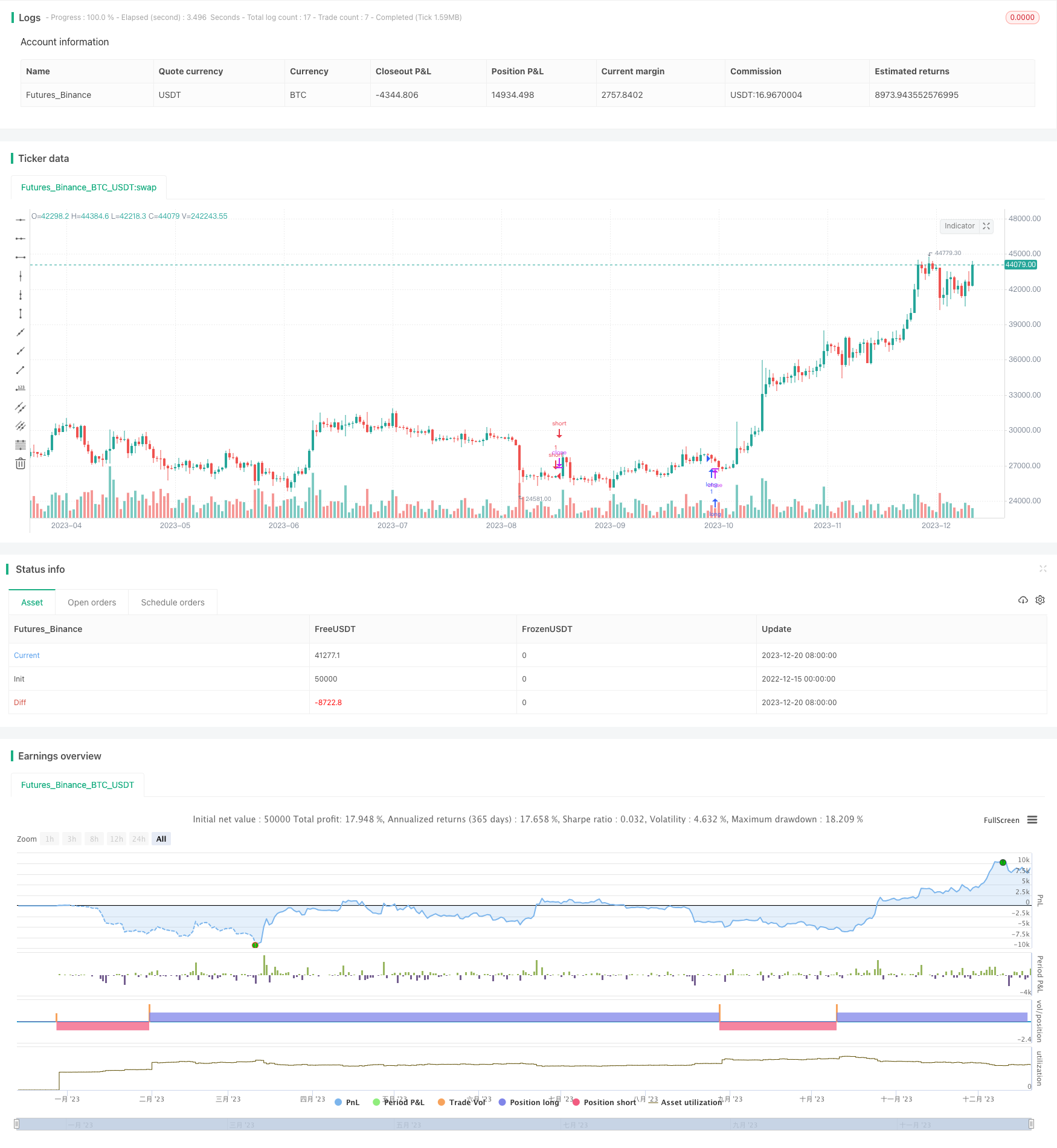Stratégie de percée quantitative des prix de négociation
Auteur:ChaoZhang est là., Date: 2023-12-22 à 12h42h15Les étiquettes:

Résumé
Il s'agit d'une stratégie de trading quantitative à court terme basée sur la moyenne mobile simple (SMA), la moyenne mobile exponentielle (EMA), les canaux Keltner, l'indicateur MACD et l'oscillateur stochastique.
Principe de stratégie
La stratégie utilise une SMA de 25 périodes, une EMA de 200 périodes pour construire des lignes de moyenne mobile doubles.
L'indicateur MACD génère des signaux de trading avec sa ligne rapide, sa ligne lente et son histogramme. L'oscillateur stochastique forme également des signaux longs et courts avec la croix dorée et la croix morte de sa ligne %K et de sa ligne %D.
Plus précisément, lorsque le prix de clôture est supérieur à la fois à la SMA et à l'EMA, et à l'intérieur des canaux Keltner, l'histogramme MACD est négatif et le stochastique %K est inférieur à 50, un signal d'entrée long est déclenché.
Les avantages de la stratégie
- L'utilisation d'une moyenne mobile double combinée à un indicateur de canal peut filtrer efficacement les fausses ruptures.
- L'intégration de signaux provenant de plusieurs indicateurs techniques peut améliorer la fiabilité.
- Des règles longues/courtes claires facilitent l'efficacité de l'exécution programmatique.
- Convient pour les stratégies de négociation quantitative à haute fréquence.
Risques stratégiques et optimisation
- En tant que stratégie de négociation à court terme, elle comporte des risques de fréquence de négociation élevés.
- Il n'existe pas de mécanisme de stop loss, ce qui entraîne des risques de pertes importants.
- Considérez l'ajout d'indicateurs de volatilité pour optimiser les conditions d'entrée et de stop loss.
- Différentes périodes de paramètres peuvent être testées pour trouver des combinaisons optimales.
Conclusion
Cette stratégie intègre quatre indicateurs techniques couramment utilisés - moyennes mobiles, canal, MACD et stochastique. Elle détermine long/short en fonction de la percée des prix, une stratégie de trading quantitative à court terme typique.
/*backtest
start: 2022-12-15 00:00:00
end: 2023-12-21 00:00:00
period: 1d
basePeriod: 1h
exchanges: [{"eid":"Futures_Binance","currency":"BTC_USDT"}]
*/
// This source code is subject to the terms of the Mozilla Public License 2.0 at https://mozilla.org/MPL/2.0/
// © exlux99
//@version=5
strategy(title="Scalping Trading System Crypto and Stocks", overlay=true)
src = input(low, title="Source")
//sma and ema
len = input.int(25, minval=1, title="Length SMA" , group="Moving Averages")
len2 = input.int(200, minval=1, title="Length EMA", group="Moving Averages")
out = ta.sma(src, len)
out2 = ta.ema(src, len2)
//keltner
lengthk = input.int(10, minval=1, title="Length Keltner Channel",group="Keltner")
mult = input(2.0, "Multiplier",group="Keltner")
BandsStyle = input.string("Average True Range", options = ["Average True Range", "True Range", "Range"], title="Bands Style",group="Keltner")
atrlength = input(14, "ATR Length",group="Keltner")
ma = ta.sma(src, lengthk)
rangema = BandsStyle == "True Range" ? ta.tr(true) : BandsStyle == "Average True Range" ? ta.atr(atrlength) : ta.rma(high - low, lengthk)
upper = ma + rangema * mult
lower = ma - rangema * mult
//stoch
periodK = input.int(10, title="%K Length", minval=1,group="Stochastic")
smoothK = input.int(1, title="%K Smoothing", minval=1,group="Stochastic")
periodD = input.int(1, title="%D Smoothing", minval=1,group="Stochastic")
k = ta.sma(ta.stoch(close, high, low, periodK), smoothK)
d = ta.sma(k, periodD)
//macd 1
fast_length = input(title="Fast Length MACD", defval=4,group="MACD Fast")
slow_length = input(title="Slow Length MACD", defval=34,group="MACD Fast")
signal_length = input.int(title="Signal Smoothing MACD", minval = 1, maxval = 50, defval = 5,group="MACD Fast")
sma_source = input.string(title="Oscillator MA Type MACD", defval="EMA", options=["SMA", "EMA"],group="MACD Fast")
sma_signal = input.string(title="Signal Line MA Type MACD", defval="EMA", options=["SMA", "EMA"],group="MACD Fast")
fast_ma = sma_source == "SMA" ? ta.sma(src, fast_length) : ta.ema(src, fast_length)
slow_ma = sma_source == "SMA" ? ta.sma(src, slow_length) : ta.ema(src, slow_length)
macd = fast_ma - slow_ma
signal = sma_signal == "SMA" ? ta.sma(macd, signal_length) : ta.ema(macd, signal_length)
hist = macd - signal
long= close > out and close < upper and close > lower and hist < 0 and k < 50 and close > out2
short= close < out and close < upper and close > lower and hist > 0 and k > 50 and close < out2
strategy.entry("long",strategy.long,when= long)
strategy.entry("short",strategy.short,when=short)
- Stratégie de négociation de la moyenne mobile de rupture de l'élan
- Stratégie de négociation des moyennes mobiles exponentielles de Heiken Ashi
- Stratégie de négociation algorithmique à haute performance basée sur des modèles quantitatifs
- Stratégie de rupture de Bollinger Momentum
- Stratégie de suivi des tendances des SAR paraboliques et des EMA
- Stratégie haut/bas brisée
- Stratégie de suivi des risques à faible pyramide
- Système de négociation quantitative TSLA sur plusieurs délais
- Stratégie HTF personnalisable non-repeint MACD MFI évolutive
- Moyenne mobile exponentielle double et stratégie ALMA
- Stratégie de l'indice de vigueur relative stochastique d' Ehlers Fisher
- Stratégie de négociation algorithmique de rupture de dynamique double et de filtrage de la volatilité
- Stratégie globale de moyenne mobile multiple
- Stratégie combinée RSI d'inversion des prix
- Stratégie de percée de la nébuleuse de nuages à moyenne mobile double
- MACD Croix dorée Croix de la mort Tendance suivant la stratégie
- Suivre la tendance de la tortue
- Stratégie de tendance du canal de Donchian à double confirmation
- Stratégie d'inversion du moment basée sur un modèle multifactoriel
- Stratégie de négociation à court terme basée sur l'indicateur de volatilité Chaikin